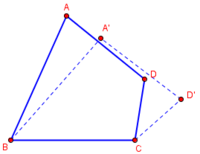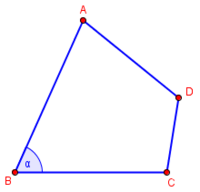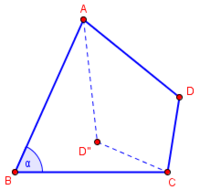ihaveaquston
New member
- Joined
- May 30, 2021
- Messages
- 2
Hello,
what is the smallest possible amount of data to describe a polygon? I wonder if there is any theorem that could help answering my question. As describing I mean giving enough information to accurately recreate the polygon. As amount of data I mean a number of given values and each value can represent one of the following:
- length of a specific side
- measure of a specific angle
For triangles the number would be 3 (for example lengths of each side), but for a quadrangle you would need 6, I guess (for example 4 side lengths and 2 angles). How a formula for minimum number of values depending on numer of sides looks? How does it change if we know that a polygon is convex?
what is the smallest possible amount of data to describe a polygon? I wonder if there is any theorem that could help answering my question. As describing I mean giving enough information to accurately recreate the polygon. As amount of data I mean a number of given values and each value can represent one of the following:
- length of a specific side
- measure of a specific angle
For triangles the number would be 3 (for example lengths of each side), but for a quadrangle you would need 6, I guess (for example 4 side lengths and 2 angles). How a formula for minimum number of values depending on numer of sides looks? How does it change if we know that a polygon is convex?



